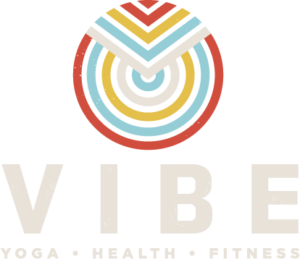
24 Nov How Creating an Attitude of Gratitude Improves Your Work-Life Balance
Some seasons of our personal and professional lives feel more challenging than others–and in some cases, entire years (Oh hey, 2020!). When things are in flux, and we have difficult situations and circumstances on our hands, it’s easy to focus on what’s not going well. The stressors we deal with manifest in our minds, bodies, and spirits.
Adopting an attitude of gratitude creates ripples of positive change throughout your life. Actively focusing your energy on appreciating the good makes it easier to maintain your work-life balance and handle life’s obstacles and struggles, both mentally and physically.
Today, we’re sharing some amazing ways that gratitude can improve your life, and tips for getting started.
Gratitude and Your Health
Gratitude isn’t just a practice that sounds nice. Research shows that gratitude meditation, or spending time reflecting on what you’re grateful for, has a very real effect on your overall health. People who practice gratitude have healthier immune and endocrine systems, and are known to experience:
- Lower stress
- Healthier hearts
- Better sleep
- Improved Moods
- Decreased inflammation
You might be wondering how exactly gratitude creates health benefits. Well, grateful thinking produces two “feel good” chemicals in our brains, dopamine and serotonin. These neurotransmitters improve our moods and motivation levels. Focusing on an attitude of gratitude strengthens our neural pathways so we can cultivate a happier and more grateful outlook in our day-to-day lives. When your mind and body are healthy, it’s easier to balance your work and personal lives with a positive perspective.
Gratitude at Work
Gratitude will change your work life for the better. Many of us spend most of our days at work. Making gratitude part of your professional life will let you approach each day feeling more focused and satisfied. And when you feel happier about your workday, you’re more energized when it’s time to shift gears to your home life.
Practicing gratitude at work also encourages more empathy toward your colleagues, and will inspire you to become a better team player. Showing your appreciation for your co-workers and employees makes them feel more valued and builds even better relationships with them. When you make gratitude a priority, you might also notice a boost in your productivity and decision-making abilities.
Developing a Positive Mindset
Juggling your responsibilities at work and home can be overwhelming, we know. But with the positive mindset you’ll get from grateful thinking, you’ll feel more equipped to take on each day’s challenges. Gratitude and positive thinking help you achieve a better work-life balance, and you’ll enjoy the days’ good moments even more.

Adopt an attitude of gratitude and enjoy the benefits it has on your work-life balance!
When you practice gratitude as a daily habit, you’ll notice yourself becoming more optimistic about the future. Focusing on what’s going right in your world will increase your sense of satisfaction with life in its current state. And, your expectations for the future will improve, too. Approaching each day with a sense of hope will positively impact how you balance your responsibilities, both at work and at home.
How to Adopt an Attitude of Gratitude
The wonderful thing about gratitude is that making it part of your life doesn’t take a lot of work. Whether you want to create gratitude habits for yourself, or you’re just interested in seeing how gratitude might benefit you, there are several simple ways to get started. Give one of these gratitude activities a try and start feeling improvements in your work-life balance in no time.
Write it Down
Writing down or journaling what you’re grateful for is one of the most popular ways people practice gratitude. That’s because thinking about the positive aspects of your life and enjoying the associated good feelings relaxes you and stirs up happy vibes. Here are a few tips to consider if you decide to start a gratitude journal:
- Be as specific as possible about what you’re grateful for. For example, “My friend sent me a note, and it made me feel good to know she thought of me” is better than “My friends.”
- Focus on people and your interactions with them as much as possible.
- Think about negative outcomes you’ve prevented or avoided, in addition to adding up the good things.
- Be sure to include positive events or situations that surprised you, or that you weren’t expecting. These bring about intense feelings of gratitude.
- Write frequently, but don’t overdo it. Several times a week will do. You don’t want gratitude journaling to feel like a chore!
Say It
Noticing that something makes you feel good and voicing your appreciation for it are two essential steps in focusing on gratitude. So, the next time a co-worker, friend, or family member does something you are thankful for, tell them so. Whether you write them a note, shoot them an email, or say it out loud, expressing your gratitude encourages a cycle of positive actions and reactions in your life.
Try Yoga
Connecting with your breath and clearing your mind paves the way for grateful thinking. Yoga provides a fantastic opportunity to focus on positive thoughts and find peace, while also moving, stretching, and strengthening your body. As you progress through various poses in your next yoga class at VIBE, think about the different ways your body is serving you in your movements. From your deep breaths to the stability your feet provide you, yoga offers you many moments to appreciate your body, and in turn, your life.
We hope today’s blog inspires you to start practicing gratitude in your life and enjoying the benefits it has on your work-life balance!
Interested in reducing your stress levels and feeling more focused? Check out our schedule of yoga and fitness classes and our selection of CBD products. We’ll help you explore how to find balance through functional movement, health, and wellness.





